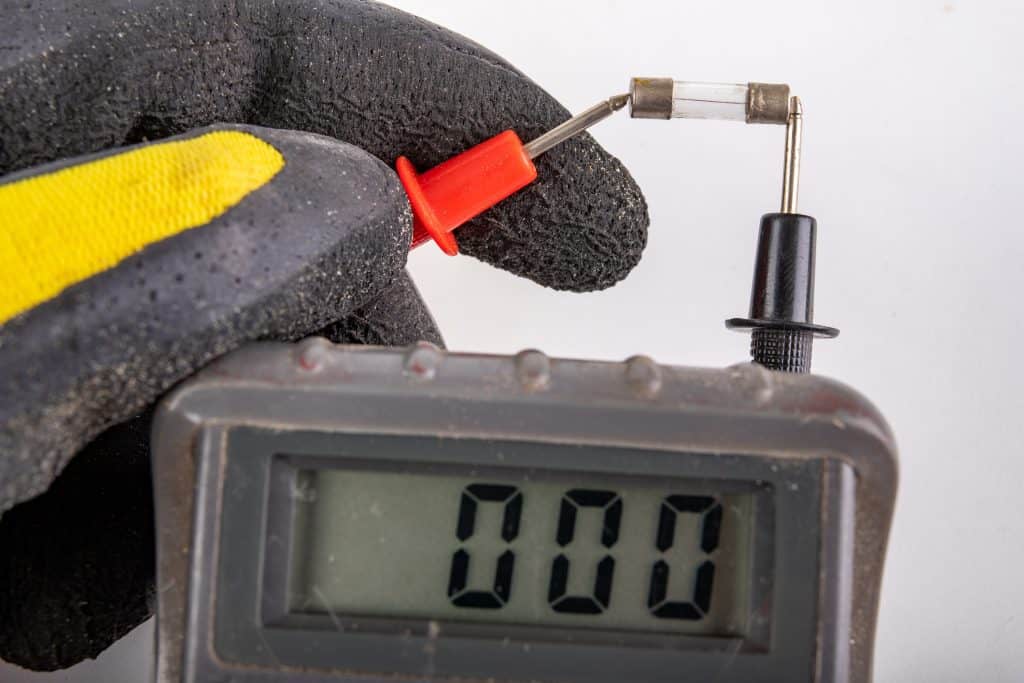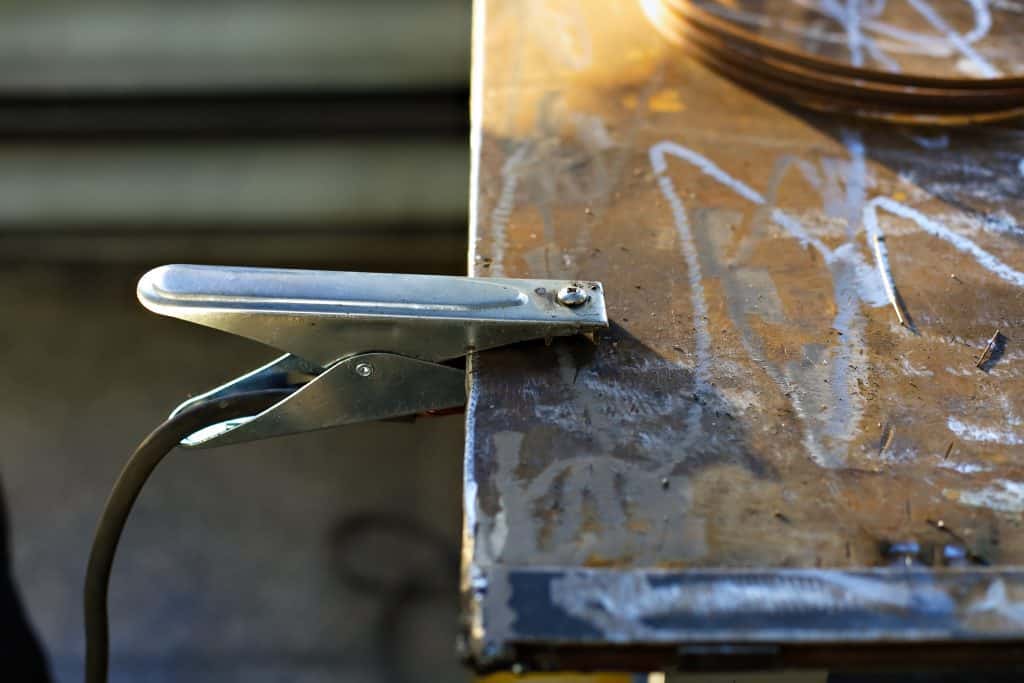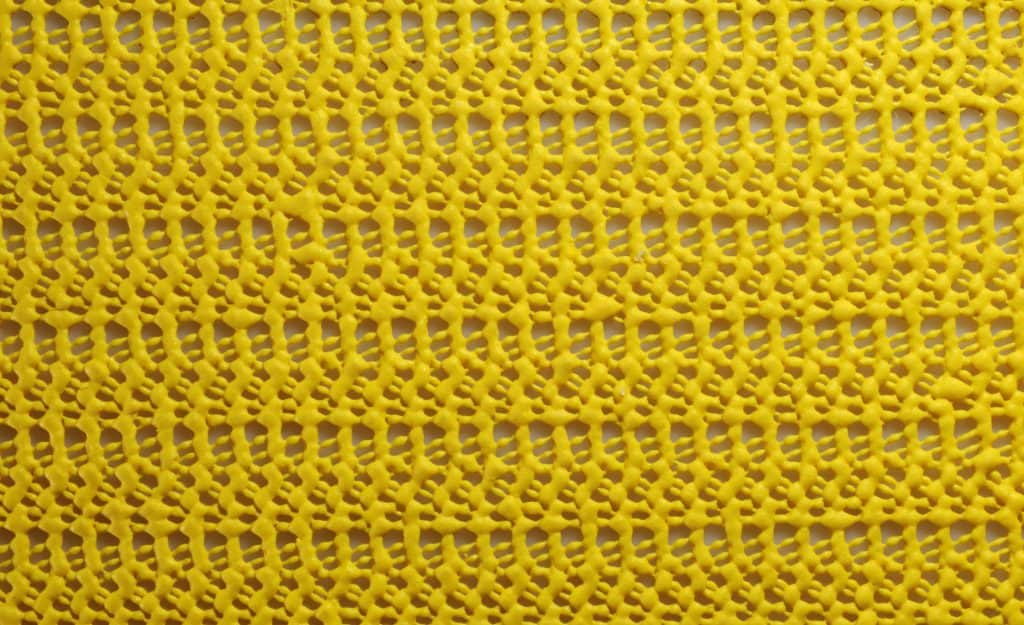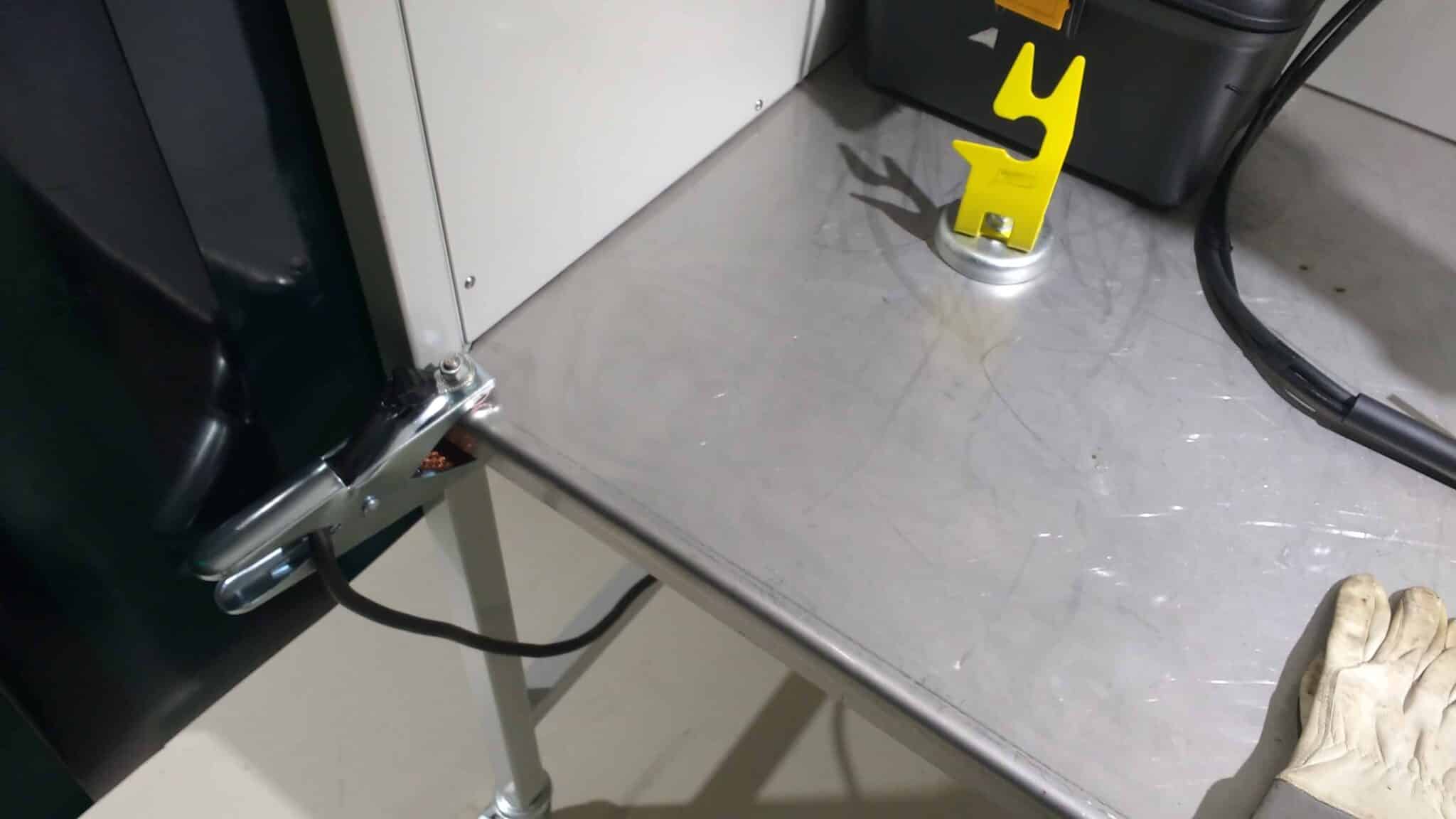“This post contains affiliate links, and I will be compensated if you make a purchase after clicking on my links.”
Tungsten inert gas welding, or TIG welding, is one of the most versatile forms of manual welding. While it is one of the more difficult processes to learn, it produces one of the highest quality welds. TIG welding uses an electrode to create an arc, creating for a consistent stream of electricity to the workspace. This can be dangerous when safety is not an emphasis.
How do you stop a TIG welder from shocking you? Electrical shocks can occur while TIG welding if the necessary precautions are not taken. You can prevent shocks from a TIG welder by using welding equipment that is in good condition, by wearing proper personal safety equipment, maintaining a suitable workspace, and keeping yourself and the space dry.
Being shocked is a genuine risk when TIG welding if you do not procure a safe work environment. No one wants to be shocked when working with these very powerful tools. If the proper safety precautions are taken, you can prevent yourself from shocks. This article will dive into how to keep your TIG welder from shocking you in greater detail.
Why Does Your TIG Welder Shock You?
You need to know why your TIG welder shocks you to understand better how you can stop it from happening. TIG welding’s use of electricity creates powerful currents to conduct heat to melt the metal that you are working with. A consistent current is conducted when the device is on so that powerful electrical charges do not fluctuate when putting in contact with the metal.
How TIG Welding Works
TIG welding uses a tungsten electrode to heat metal and form two pieces of metal together. Tungsten has an incredibly high melting point, so it will not melt when welding, unlike other welding types. This is known as a non-consumable electrode, which helps maintain a precise workspace without adding filler metal. This is unique to this form of welding.
Having a choice between adding filler metal or not makes this welding technique attractive, especially if you do not want to add additional metal. This allows for cleaner and smaller welds. If you do want to add additional filler metal, you will need to feed this into the arc by hand. Make sure this metal is compatible with the workpiece you are using.
The electrical current runs from a power source to heat the metal, and a gas shield is created around the electrical arc. This is typically argon, and it prevents foreign particles and oxygen in the air from reacting with the molten metal. The gas is released as you trigger the welding machine.
A foot pedal is used to help control the level of heat being conducted by the welder. This should be determined by the type of metal you are working with. This heat conducted by the electrode will allow you to successfully weld and join your metal pieces together. The use of electricity is beneficial for these precise welds, but it also can present some safety challenges.
Resistance

Electrical currents always aim to take the path of least resistance in completing their electrical circuit or find the easiest way to complete their path. When TIG welding, a ground clamp is attached to the metal to make the flow of energy start from the power source and end at the ground. Running through the workspace to the ground should use the least resistance.
You are at risk of being shocked when your body is the path of least resistance. Your skin does not typically have a high conductivity coefficient, at least compared to metals and other sources. This conductivity increases when you are wet (could be from sweat or weather conditions), or there is not a proper flow of energy from the welder to the ground.
TIG welders shock you when your body has the highest conductivity coefficient. This means that the flow of an electrical current can easily make its way through your body as opposed to another source. Again, the current choose the easiest path. This is something you always want to avoid with the proper welding set up and safety equipment.
DC vs. AC Power
The type of electrical current you use will depend on the type of metal you are working with during TIG welding. There are two types of electrical current: direct current and alternating current.
For most types of metal, you will be using DC power or “direct current.” This is similar to the electrical current that is used in a car battery. One wire will be negative and the other positive. The electrode is typically negative, and the metal workpiece is positive. “DCEN” is a more specific technical term that indicates that the electrode is negative.
For aluminum TIG welding, you will use AC or “alternating current.” The negative and positive charges are not set like in DC, so the negative and positive charges alternate between the electrode and the metal. The buildup can occur in your welding pool with aluminum if AC is not used, so this process makes the workpiece easier to control and work with.
You will have to connect your welder to a power source that produces DC or AC currents. The current need to make a complete loop from the power source to the electrode and workpiece and back. This is accomplished by using a metal clamp to attach to the workpiece. This is a similar concept to the clamp you would use to charge a car battery.
Preventing TIG Welder Shocks
Because we know that TIG welding uses very powerful electrical currents to heat the metal you are working with, immense precautions need to be taken to prevent shocks. This section details how you can prevent yourself from becoming the path of least resistance and forcing the electrical current to flow elsewhere.
Proper Equipment
Using equipment that is in proper condition is one of the most important aspects of preventing yourself from being shocked by a TIG welder. Equipment can get worn out, and people will still use it, so they do not have to pay for major repairs. This can be incredibly dangerous and force the electrical current to come in contact with your body.
Welding Machine in Good Condition
The welder that you use should be in optimal working condition. Damage to the shield of the machine can lead to shocks. This is most common when the insulating material that covers the device breaks or is cracked off. The machine should be covered entirely to ensure that no metal is exposed. The insulating material prevents currents from escaping elsewhere on the machine.
To keep your welding machine in excellent condition, you should:
- Be careful with use: Make sure that you do not drop, scratch, dent, or damage your welding machine in any way. This will lead to earlier repairs or replacements and can be dangerous if it interferes or damages the insulated cover.
- Storage: Make sure you store your welder in a safe place that is out of the way of traffic, which can present the potential for something to damage it.
- Do not touch the electrode: When welding, the workpiece of metal should never touch the tungsten electrode. This will result in a change of sound, noise, and color of the metal. This can damage the electrode and the workpiece.
Taking care of your equipment will not only protect you from being shocked, but it will also increase the longevity of your equipment. This will require fewer repairs and replacements.
Ground Clamp

You should always be using a ground clamp when TIG welding. A ground clamp is used to channel the electrical current from the welding machine to the ground. This prevents you from getting shocked and also serves a performance purpose of allowing the energy current to complete its cycle. Without a good clamp, the quality of the weld will suffer.
The ground clamp, also known as an earth clamp, must be in good condition and high quality. Some designs are not as effective as others, increasing safety concerns and decreasing welding abilities. You will want to find one that securely fits onto the desired workpiece size. Some clamps may not be able to open wide enough if you are working with thicker pieces of metal.
The clamp must be properly attached to the workpiece, the cable must be properly secured to the clamp with a steady lug, and the clamp itself must be of good design and in working condition. Any problems with these will compromise the circuit of energy and lead to problems. Ground clamps are designed to create the optimal circuit of conductivity for quality welding.
You should check your clamps regularly to ensure they are in good condition. This will prevent currents from finding you attractive to shock and will not allow interference with the welding job at hand. Replace clamps that are broken or make necessary adjustments to those that need fixing.
Safety Mat

If you work with TIG welding machines frequently, you want to prevent all opportunities to be shocked. Another way in which you can do this is to set down a safety mat made of rubber or other insulating materials. Rubbers act as great insulators because they disrupt the path of electricity.
These mats are also useful for many long hours of standing while working. They will prevent you from fatiguing as easily as well as slipping. The material can safely defuse sparks and hot materials too. Adding these extra features to your workspace will help to increase the overall safety and functionality.
Personal Safety Equipment
One area that can often be overlooked when welding is wearing the proper safety equipment. Welders are very cognizant of wearing a good helmet, but they may not give much thought to the other necessary safety gear that will prevent injury and shocks from a TIG welder.
The three main areas to focus on for personal safety equipment include:
- Gloves: Wearing protective gloves is one of the most essential pieces of equipment to wear when working with TIG welders. This prevents your hands from sparks, and the right gloves will prevent shocks. You want a pair of gloves that have insulated material on it. Most typically, this will be a durable rubber.
- Clothes: You should be wearing long sleeves and pants to keep your skin as protected as possible from sparks and hot metals. Thicker clothing will also prevent these things from penetrating your skin.
- Shoes: Rubber-soled shoes will act as insulation if you are in contact with an electrical current. This will help to prevent shocks. All shoes should be closed-toed and not expose any skin for ultimate safety.
Safe Workspace

Maintaining a safe workspace will decrease your risks of being shocked by a TIG welder as well as cut down on lots of dangers in a welding environment. The most important way in which you can keep the space safe is to keep it dry. Water is an excellent conductor for electricity. Exposure to water or anything damp will attract a current. This could put you at risk for shocks.
There are a couple of ways in which your work environment can become wet, and you should do your best to avoid these things:
- Welding in or around rain: Welding in the rain is incredibly dangerous and ineffective. It will not only produce poor welds but will shock you when the welder is exposed to these conditions.
- Wet worktops: Make sure all counters and workspaces are dry after being wiped down or exposed to any type of liquid. This will prevent risks of shocks.
- Food or drink: Keep these items out of the workspace. Spills can result in danger and interfere with the overall work. They also make a workspace more cluttered. Compartmentalize your workspace and your break spaces for efficiency as well as safety.
- Sweat: Especially in summer months with lots of protective gear, you can get sweaty. Having wet skin increases your attractiveness as an electrical conductor. Keep extra clothing around if your clothes become damp or wet.
Keeping the wetness out of your welding workspace will prevent shocks. This is something that people do not immediately think of, but we know that water and electricity are not a good mix. In addition to shocks, you could also be at risk for fires and leaks of gas in a welding environment. Keep the space organized and clean for optimal and safe working conditions.
TIG Welding Applications
You now have a comprehensive guide on how to prevent yourself from being shocked when TIG welding. But when will you use it over other forms of welding? Multiple applications may benefit from this type of welding process more than others.
You should use a TIG welder for jobs such as:
- Thin metalwork: Using lower amperages (less heat conducted) will allow you to work more precisely with the metal at hand. This is key as the melting of thinner pieces of metal occurs more quickly.
- Automotive work: Using TIG welding requires less heat to manipulate the metals, allowing you to control the workspace more efficiently and create cleaner welds. Less filler material is also used as compared to other forms of welding. This is important for cars that need strong holds and to be aesthetically pleasing.
- Making clean welds: TIG welding’s ability to provide better overall control and less filler metal in the workpiece will create cleaner welding jobs.
- Working with aluminum and magnesium: TIG welding is commonly used for working with these metals as they are often thinner and can be manipulated in a clean and visually appealing way.
- High-quality welds: The overall quality of the welding work is higher when working with TIG processes. The increased control and skills required to result in a clean and sturdy hold between two metal pieces.
If you plan to weld with any of these applications, consider TIG welding for the job. It has become a popular choice for its quality and efficiency in keeping the workpieces neat as well as held strongly together.
Keep Yourself Safe When TIG Welding
The risks of shock in TIG welding are serious. When one of the many improper conditions presents itself in TIG welding environments, welders put themselves at high risk for electrical shock. This can result in loss of body movement and in the worst situations, fatalities. The goal of welding is to complete a job in a safe way.
Following the many steps and precautions for safe TIG welding will shield you from the risk of being shocked while using a TIG welder. The most important considerations are to make sure your equipment is suitable, you are wearing protective gear, your workspace is clean and dry, and that you are taking caution in all your actions.
TIG welding is incredibly useful for welders to do as it can help to complete many jobs that require high quality and precise welding work. Keeping yourself safe in the process will allow you to complete many TIG welding jobs in the future.




